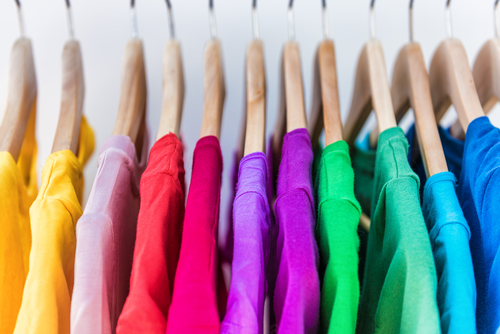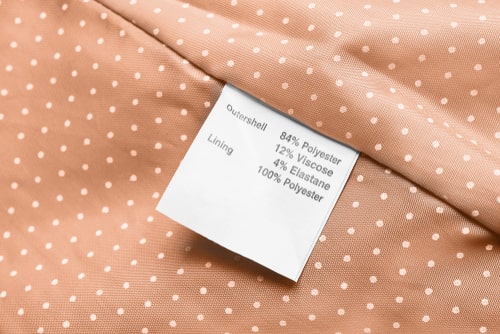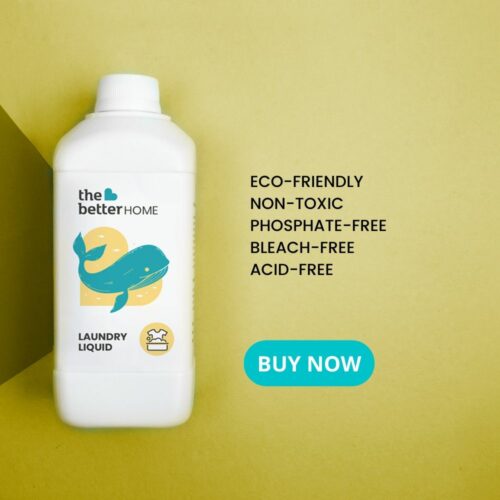Microfibre Pollution from Laundry: It’s Big. It’s Bad. It Can Be Reduced by You
You've heard of plastic pollution and how it is the biggest threat facing our oceans. But did you know that we're literally wearing plastic pollution on our sleeves?

Microfibres are the tiny strands of plastic that are shed from the synthetic fabric in clothing, bed linen, furnishing and carpets. The biggest source of microfibre pollution is our clothing. Today, synthetic materials such as nylon, polyester and acrylic make up about 60 per cent of clothing globally compared to natural fibres like cotton and silk. The popularity of synthetic lies in the fact that it is cheap, quick and easy to produce.
Unlike natural fibres, it is lightweight and easy to care for. These fabrics possess other favourable properties that make them amenable to a wide variety of use-cases – from athleisure to winter warmers, even undergarments. They are durable, waterproof, stain-resistant, elastic and can provide wearers warmth and insulation. All this make them tough competition for natural fibres that are prone to damage by water, pests and stains.
While they may offer many advantages, these plastic fibres are a big problem, and because they are so tiny, the problem often slips away unnoticed.

What is microfibre pollution?
Synthetic fabrics, the most common of which is polyester, are made of petroleum-based chemicals – a form of plastic. When washed and worn, these fabrics shed strands of plastic that are as tiny as 5mm – small enough to be invisible to the naked eye. These microscopic fibres are hard to trap and easily pass through the lint filters of our washing machines, through drains and pipes, and through sewage treatment plants into water bodies. This happens whether the garment you’re washing is made of virgin plastic or if it’s a t-shirt made of upcycled PET bottles. As long as it contains plastic, it adds to the problem of microfibre pollution.
One study estimates that approximately 700,000 micro fleeces are released from each garment when we wash our clothes at home. And laundry is just one source of microplastic pollution. This invisible problem is the biggest threat facing aquatic habitats today. This conclusion was arrived at by a study that sampled wastewater from domestic washing machines.
It found that a single garment can produce more than 1,900 fibres per wash. This wide-ranging study, conducted in 18 sites across 6 continents, found that marine microplastic pollution was tied closely to sewage which contained plastic fibres from washing clothes. It is anticipated that, to date, 1.5 million trillion microfibres are present in the ocean.
When these tiny fibres enter the water, they attract waterborne pollutants, bacteria, heavy metals and other contaminants that stick to their surface. They also leach toxic chemicals into the water. They are like tiny pellets of poison floating in the water. They enter the marine food web when fish and other aquatic organisms ingest them, mistaking them for food.
Our ocean waters are so contaminated by plastic that even organisms in the deepest part of the ocean aren’t safe from it. Once ingested by animals, microplastic is stored by tissues and cells where they accumulate and cause damage to their organs. They travel up the food chain, eventually transferring the pollution to human bodies. But seafood consumption is not the only way by which plastic pollution transfers to humans, it is also ingested through polluted tap water and consumables, as this study found after it examined sea salt and beer.

How to reduce microplastic pollution?
Microplastic pollution is a gigantic problem that began in the 1940s with the mass production of plastic. The solution, too, needs to be of industrial scale and requires active industry involvement and policy change, whether it’s innovative materials and eco-friendly garment design from the fashion and textile sectors, mandates on synthetic fibres, improved sewage treatment infrastructure or washing machines with upgraded filters that can trap these tiny fibres.
But there are many steps that can be taken at the individual and household level to make even the smallest dent in this problem. Here are a few to help you get started:
- Wash synthetic clothes less frequently: Acrylic clothes are known to release the most fibres per wash followed by polyester and poly-cot blends. The older the garment, the more fibres it sheds. So, use these garments gently and wash them less frequently. The key is to reuse garments as many times as possible and only wash them when they get very dirty.
- Handwash synthetics: Gentle handwashing and rinsing in cold water can significantly minimise microfibre shedding from synthetic clothes. It can also minimise wear and tear caused by friction. Clothing made of fleece and micro-fleece are the biggest contributors of microfibers and are best hand-washed.
- Use natural, biodegradable fibres whenever possible: While choosing to buy 100 per cent natural fibres all the time may not be viable, you can opt for natural fibres such as cotton, linen or hemp for certain types of clothing, say garments you wear daily or those that are exposed to rough use.
- Pay attention to your washing machine settings: The standard rule is that the colder the water and the shorter and more gentle the spin cycle, the fewer are the microfibers released.
- Sort your washing: Don’t wash synthetic garments along with heavy items such as bags, backpacks and shoes. Heavy items cause more friction which means more fibres are released from your clothes.
- Your detergent can make a difference: Firstly, choose a detergent without bleach. Bleach deteriorates the fibre in synthetic clothes by eroding them. The more worn out a garment, the more fibres it will shed. Second, choose a liquid detergent such as The Better Home detergent over a washing powder whose granules can increase friction while washing and erode fibres.
- Wash only full loads: The more room your clothes have to move about in the washing, the higher the fibre loss. So, keep thing tight and compact and reduce friction by running your machine only when it is full.
- Use washing bags to separate your synthetic clothes: Sort your laundry by using washing bags. They help minimise friction, and thus, shedding of microfibre by reducing the contact between garments. These bags also prevent fibre loss from snagging, tearing and tangling.
- You washing machine type can matter: One study found that front-loading machines shed 7 times less fibre than top-loading ones.
- Avoid microfibre cleaning cloths: While microfibre cloths are efficient to remove dust, they also shed tiny plastic fibres with every wash. Use cotton rags instead.
If you found our stories insightful, informative, or even just enjoyable, we invite you to consider making a voluntary payment to support the work we do at The Better India. Your contribution helps us continue producing quality content that educates, inspires, and drives positive change.
Choose one of the payment options below for your contribution-
By paying for the stories you value, you directly contribute to sustaining our efforts focused on making a difference in the world. Together, let’s ensure that impactful stories continue to be told and shared, enriching lives and communities alike.
Thank you for your support. Here are some frequently asked questions you might find helpful to know why you are contributing?


This story made me
-
97
-
121
-
89
-
167











